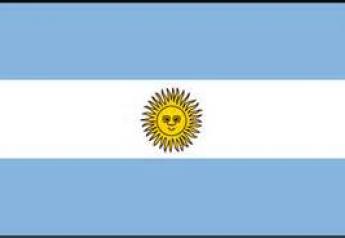Kansas State Research Reveals This Feeding Practice Shows Sustainable Solutions for Raising Cattle
USFR-Beef Research Kansas State University
The United States and European Union have pledged another way to tackle climate change, and it could have a direct impact on agriculture. The pledge is to reduce methane emissions by at least 30% by the end of the decade, with President Joe Biden saying the move will have a wide impact.
"This will not only rapidly reduce the rate of global warming, but it will also produce a very valuable side benefit like improving public health and agricultural output," said Biden.
Work Already Underway for Sustainable Solutions in Beef Production
While the recently outlined goal from the Biden administration is new, work is already underway to uncover even more sustainable solutions in beef production, even beyond just focusing on methane. Recently, a Kansas State University study showed a feeding practice already utilized by some cattle producers could also limit the amount of manure produced by cattle in the U.S., a finding that also has economic benefits for cattle producers.
“We are at the KSU Beef Stocker Unit,” says Dale Blasi, professor and extension specialist in Beef Cattle Nutrition and Management, Kansas State University. “This is one of several units located within the department of animal sciences and industries, located about five miles north and west outside of Manhattan, Kansas.”
The KSU Beef Stocker Unit Is a second home for Blasi and his team. Sitting in the middle of the Flint Hills and on the edge of Manhattan, the research being done on cattle is already revealing major economic and environmental benefits of limit feeding, a practice that isn’t new in cattle production, having been around for several years.
“For the better part of five years, our unit has focused specifically on the use of limit feeding as a means by which to reduce input requirements and provide comparable levels of production in our beef cattle,” explains Blasi.
According to the Kansas State researcher, limit- or program-feeding refers to the practice of limiting calves to two-thirds to three-quarters of the dry matter that they can normally consume. While limit feeding often occurs when producers have limited access to forage, due to weather challenges like drought, Blasi says the practice is producing promising results year-round, no matter the weather circumstances.
“Limit feeding is feeding specifically to the NRC requirements, where we essentially program getting calves to a certain level of gain,” adds Blasi. “So, we are able to measure that performance on a weekly basis by weighing them as a pen group, and adjust their intake of the diets that we feed.”
Minimizing Manure
While the KSU research is solely focused on the sustainability of cattle producers’ operations, the economic and environmental findings are starting to add up. Limit feeding may not be new for U.S. cattle producers, what Blasi is uncovering could have a significant impact on the cattle industry. The research at KSU - funded by National Cattlemen's Beef Association (NCBA) - is finding that the practice not only improves feed efficiency in cattle, it dramatically reduces the amount of manure cattle produce.
“What we're able to determine from our research, and by doing the intensive digestibility work with our cattle is calculate the amount of manure that is produced from the to various diets, and our previous research over the last five years suggests a reduction in manure output of about 35%,” says Blasi.
The findings of the research aren’t just showing up in the data Blasi and KSU research assistants are collecting, but the results are hard to miss when visiting the KSU Stocker Unit. As Blasi walked through the unit, he pointed to two pens, side by side. One pen was fed with a traditional diet of mostly roughage.
“Our limit feeding diet consists of only about 13% roughage, that's versus 45% on the ad lib,” says Blasi.
The other pen, which visually showed less waste from the cattle, was one fed with the alternative limit feeding recipe.
“Over here, we have the more digester digestible, the limit-fed diet that is comprised of about 40% of a co-product,” says Blasi.
The co-product in the limit fed diet is either dried distiller’s grains, or wet corn gluten feed, and with about 38% corn. And Blasi says the limit feeding concoction is highly digestible, with a visual difference of less waste.
“Because of the material the animal ingests is much more highly digestible, and as a result, there's less of it coming out of the animal,” he says.
The two different diets are fed year-round, with the research trials lasting anywhere from 45 to 120 days on these calves. Students document observations in the pens, with ear tags also constantly collecting data.
“Alongside with our work, and we're incorporating this technology to try to give us a better job in terms of understanding what is happening in a pen setting,” he says.
Convenience and Feasibility Aspect of Limit Feeding
Data continues to pour in showing while the environmental and economic benefits add up, convenience is also key.
“In Kansas, we are prone to drought as many other parts of the country are, but the roughage in and of itself is a real inconvenience for our producers,” he says.
An issue in some producers sourcing enough roughage, is another added benefit for which Blasi sees limit feeding as a solution.
While the research at Kanas State is searching for sustainable answers for cattle production in the future, it’s also producing practical applications in the short-run
“Typically, the cattle can clean up their bunks completely within about a five-to-six-hour timeframe,” says Blasi. “And so, if there is a rain event or a snow event, there's no need to clean the bunks; they've already cleaned and stripped it dry.”
The feasible answers are showing up for a problem some producers didn’t even realize they could fix.
“There have not been any downfalls which we feel very confident to the point where we can initiate the feeding of this diet one day after arrival of these calves,” adds Blasi. “We're able to step them up approximately about one-quarter of a percent per day. So, we can have these calves on full feed for our intended diet. As we go through our receiving and our various research studies, we can feed them and hold them at about 2.2% of their body weight.”
The Kansas State University research continues to show a solution that could help propel the cattle industry’s quest to bring even more sustainable solutions for producers, both economically and environmentally.







